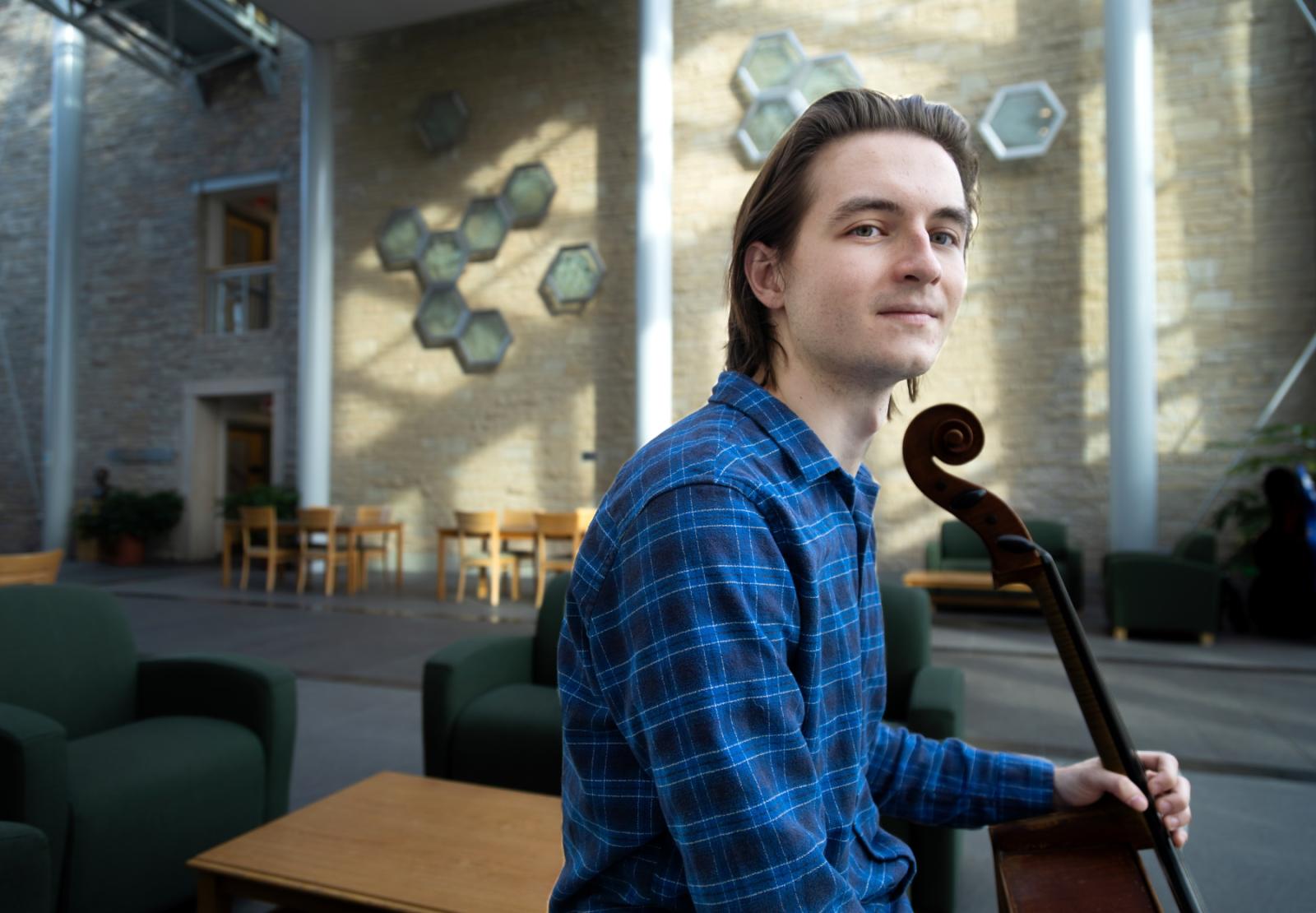Lawrence University sophomore David Smith thought he was on track to study cello in a conservatory. But his final year in high school in Radford, Virginia, rerouted him.
“I kind of fell in love with math and physics in my senior year,” Smith said.
He then sought a college path that would allow him to study math and physics at a high level while remaining immersed in music. He found just that at Lawrence, where he is pursuing a double major in mathematics and physics while also being a fixture in the Conservatory of Music.
“I’ve played cello since I was 5,” Smith said.
And he’s done it brilliantly—so much so that he was recently named the co-winner of the Conservatory’s annual Concerto Competition (along with junior Annika Schmidt). As a co-winner, he will now take to the Memorial Chapel stage to perform as a soloist with the Lawrence Symphony Orchestra (LSO) on March 8.
Explore the laws of the universe through individualized research, multidisciplinary courses, and collaborative experiences.
Math is the universal language. Become fluent as you follow Lawrence’s carefully crafted mathematics pathway.
After more than a dozen years playing cello, Smith said he found the perfect balance at Lawrence. Drawn to the theoretical, math-heavy side of physics, switching focus from music to math was the right choice, he said. But that yearning to stay connected to his music didn’t go away.
“That is why I like Lawrence; I can participate in everything without having to be in the Conservatory,” Smith said. “I’m taking lessons, I’m going to studio, I’m in a bunch of chamber groups—I’m in the Con and I’m not.”
More about Concerto Competition co-winner Annika Schmidt: cello and linguistics
For the past year, Smith has focused his music on a single work: Ernest Bloch's Cello Concerto. He will perform it in the March 8 LSO concert. It is fully titled Schelomo: Rhapsodie Hébraïque for Violoncello and Orchestra; the immense title is matched by music of similar complexity.
“It’s unlike any other cello concerto that’s been written,” Smith said. "At least to me it is different than a lot of the standard repertoire that cellists play. ... It’s kind of melismatic and, I wouldn’t say atonal, but uses a lot of dissonance and tension and release.”
Instead of a melody focus, the cellist works with the orchestra to evoke various moods. Despite Bloch’s original plan for a vocal soloist, Smith finds the work highly idiomatic for the cello.
“It was really written with cello in mind,” he said. "It's just satisfying to play; there are a lot of very expressive sections where you can take as much time as you want and play with every aspect of it. There is a lot of creative freedom you can have.”
Among the concerto’s standout features is its emphasis on despair and pain. Oftentimes these emotions are alternated rapidly, which takes careful musicality to pull off.
“I’ve never really played a piece that was written like this—with more melismatic and chromatic themes in it—so I think the hardest part was memorizing it,” Smith said. “It was a nightmare to memorize.”
Among Bloch’s most famous works, the Swiss composer wrote it in 1915 and 1916, just before leaving for America. It was the culmination of his “Jewish Cycle,” where he sought to understand his personal and religious identity by composing with his own conception of Jewish music.
It is a personal piece for Smith, too, having been well-known to him since childhood.
“I loved this piece as a kid,” he said. “I listened to it on an iPod—one of those ancient Apple iPods—to go to sleep.”
The piece has been on his repertoire wish list for many years.
Smith has plans to study physics in graduate school but will not abandon the cello along the way, he said.
“I don’t see myself ever putting the cello down,” he said.



